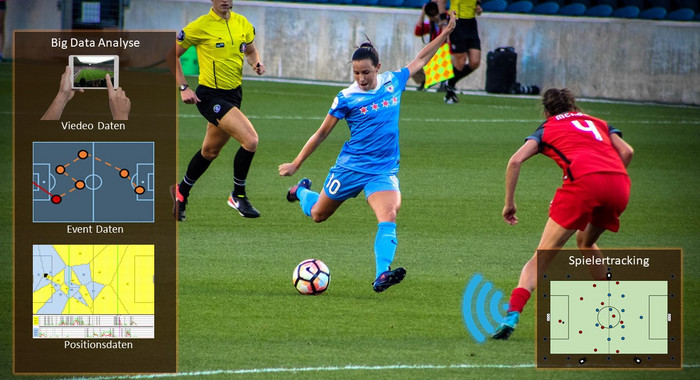Professional football: women vs men
In the run-up to the Women's World Cup a provocative advertising spot showed the German women's football nationalteam with a humorous text based on the cliché́ that women's soccer is different from men’s. "Like amateur football, only in slow motion" says the ad. But jokes aside, are there objective differences between men and women’ soccer styles?
This question was the topic of a study by the German Sport University Cologne, the results of which are now available. The research compared the soccer-specific tactical performance of women and men in Europe using event and position data.
To avoid different physiological and anatomical characteristics of both groups and to avoid gender bias in evaluating football matches, the central idea of the study was to compare event and position data of women and men at the highest level. 12 tactical key performance indicators (KPIs) were used for the evaluation. As objective analysis tools, newly developed KPIs and sports informatics analysis methods were used, which are based on artificial neural networks.
Professor Daniel Memmert, head of the study: "If we use "blinded" event and position data, in which no information about gender is revealed—therefore avoiding the risk of prejudices about women’s football—we find no significant differences in any of our twelve tactical performance variables as a function of gender".
In the event data, we evaluated several variables like number of successful passes, pass success rate, number of crosses, number of dribbling, number of rescues, as well as number of goal finishes. The analysis of event based KPIs showed that individual tactical events occur with similar frequency in women's and men's games. Based on the position data, pass-pressure-efficiency measures, different pressing indexes as well as different gain-space-control penalty area parameters and third-attack parameters were considered. The position-data based analysis reveals that women and men show comparable values in all tactical variables. In summary, it could be demonstrated that in contrast to usually conducted video-based studies, no differences in football-specific tactical performance between women and men in high-performance football can be detected when using objective, data-based analysis methods.
Professor Daniel Memmert concludes: "Since no large sample of evaluable data sets could be obtained despite numerous inquiries from associations and clubs, I hope that in future more position and event data sets of women's football matches will be generated and available to research".
The results help to inform training protocols of players, contribute to the development and professionalization of women's football in the field of tactics and to promote the public recognition of women's football based on objective evaluation criteria.
The project of the Institute for Training Science and Sports Informatics received support from the UEFA Research Grant Programme. This programme from the Union of European Football Associations (UEFA) is designed for academics working in partnership with national associations to deliver research that improves strategic decision-making in European football.
Contact
Institute of Exercise Training and Sport Informatics
Univ.-Prof. Dr. Daniel Memmert
memmert@dshs-koeln.de
+49 221 4982-4330
